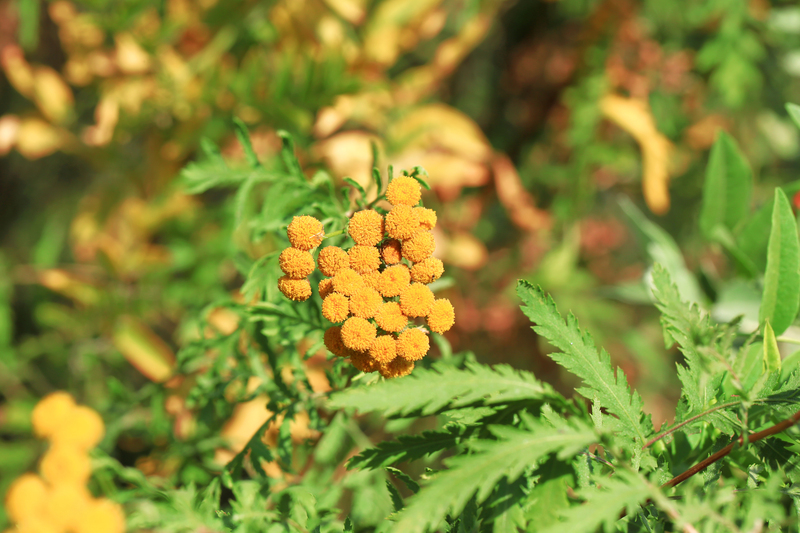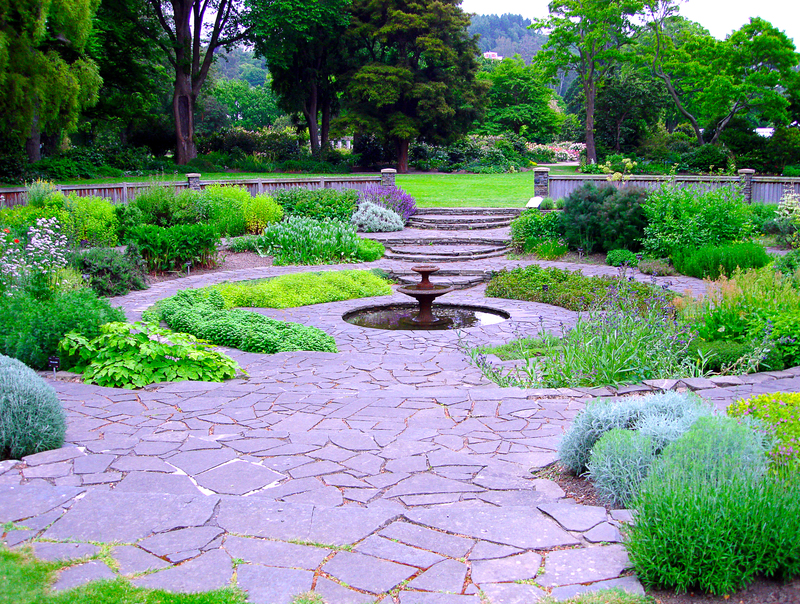Designing a Sustainable and Vibrant Herb Garden
Posted on 17/08/2025
Designing a Sustainable and Vibrant Herb Garden: A Comprehensive Guide
A well-planned and eco-friendly herb garden can transform your outdoor space, provide a fresh supply of culinary herbs, attract pollinators, and even promote sustainable living. In this comprehensive guide, we'll walk you through the ins and outs of designing a sustainable and vibrant herb garden, covering planning, preparation, plant selection, organic care, and creative inspiration for making your garden both beautiful and functional.
Why Create a Sustainable and Vibrant Herb Garden?
Designing a sustainable and vibrant herb garden isn't just about growing fresh basil or thyme. A thoughtfully designed garden can:
- Reduce your carbon footprint by lowering food miles for homegrown herbs.
- Enhance biodiversity by supporting local pollinators and beneficial insects.
- Improve health by providing fresh, chemical-free herbs for cooking and remedies.
- Boost aesthetics and property value with lush greenery and aromatic blooms.
- Promote mindfulness, as gardening provides a restorative and creative activity.

Planning Your Sustainable Herb Garden
Site Selection: Choose the Right Location
Before you put spade to soil, selecting the right spot is essential. Consider these factors:
- Sunlight: Most herbs thrive in 6-8 hours of sunlight per day. Choose a sunny spot for Mediterranean herbs like rosemary, oregano, and sage.
- Accessibility: A garden close to your kitchen or door makes harvesting easier and encourages more frequent use of your fresh herbs.
- Soil Drainage: Herbs don't like "wet feet." Ensure the area has well-drained soil. If drainage is poor, consider installing raised beds or containers.
- Protection: Shelter delicate herbs from strong winds and heavy rainfall by using natural windbreaks or positioning your garden next to a fence.
Designing for Sustainability and Beauty
An herb garden can be as practical or ornamental as you wish. For a truly sustainable and vibrant herb garden design:
- Incorporate permaculture principles: Plant in polycultures and guilds to mimic nature's diversity.
- Mix annuals and perennials: Perennials like sage, thyme, and chives return year after year, reducing labor and soil disturbance.
- Create pathways: Use stone, gravel, or mulch paths so you can easily access your herbs without compacting soil.
- Use vertical space: Trellis vining herbs (like hops or nasturtiums) and install hanging containers for trailing varieties.
Soil Health: The Foundation of Vibrancy and Sustainability
Building Rich, Living Soil
Healthy soil is pivotal for sustainable gardening. Here's how to nurture your garden's foundation:
- Add compost and organic matter: Compost improves soil fertility and structure, supports microbial life, and increases water retention.
- Use mulch: Organic mulches like shredded leaves or straw keep soil moist, suppress weeds, and add nutrients as they break down.
- Avoid synthetic fertilizers and pesticides: These can degrade soil health and harm beneficial organisms.
- Test your soil: Check pH (most herbs prefer 6.0-7.0) and amend with natural minerals as needed (lime for acidity, sulfur for alkalinity).
Encouraging Beneficial Insects and Soil Creatures
Sustainable herb gardens depend on a balanced ecosystem. Encourage earthworms, bees, ladybugs, and other allies by:
- Planting a variety of flowers and herbs to offer nectar and pollen year-round.
- Avoiding chemical sprays, which can harm pollinators and predators.
- Providing habitat piles of leaves, rocks, and deadwood for insects and spiders.
Selecting and Sourcing Herbs for a Sustainable Garden
Top Culinary and Medicinal Herbs for Your Garden
Designing a vibrant herb garden brings both flavor and health to your home. Consider these versatile and easy-to-grow options:
- Basil: An annual favorite with many varieties--great for pesto and Mediterranean dishes.
- Rosemary: A robust evergreen perennial; perfect for grills and roasted vegetables.
- Thyme: Low-growing, fragrant, and attracts bees.
- Chives: Sprightly perennial onions with edible flowers.
- Parsley: High in vitamins and adds brightness to a range of meals.
- Mints: Refreshing and invasive--best in containers.
- Cilantro/Coriander: Adds zest to salsas and curries.
- Sage: Hardy and resilient, with lovely purple flowers.
- Lemon balm: Calming herbal tea ingredient and pollinator favorite.
Choosing Native and Adapted Varieties
For a sustainable, drought-resilient, and environmentally friendly landscape, prioritize native and locally adapted herbs:
- Native plants require less water, fertilizer, and care.
- Adapted cultivars withstand local pests and weather extremes.
- Source seeds or starts from reputable nurseries or seed exchanges supporting organic practices.
Design Elements That Enhance Sustainability and Vibrancy
Companion Planting and Polyculture
Companion planting leverages symbiosis to boost productivity and resilience. For example:
- Basil and tomatoes: Basil repels some pests from tomatoes and can intensify their flavor.
- Chives and carrots: Chives can discourage carrot root-fly.
- Sage and brassicas: Sage's aroma deters cabbage moths from brassica crops.
Water Conservation Strategies
Water wisely for an eco-friendly, lush garden:
- Install drip irrigation: Delivers moisture directly to roots with little waste.
- Plant drought-tolerant varieties: Mediterranean herbs need less water.
- Mulch heavily: Reduces evaporation and stabilizes soil temperatures.
- Collect rainwater: Use barrels to harvest and recycle rain for garden irrigation.
Creative and Practical Garden Layouts
Let your imagination guide your design! Some popular sustainable herb garden formats include:
- Herb spirals: A vertical mound maximizing space, microclimates, and visual interest.
- Raised beds: Ideal if your native soil is poor or for mobility access.
- Interplanting among ornamentals: Herbs add fragrance and beauty to established flower beds.
- Window boxes and vertical walls: Excellent for small spaces and urban gardeners.
Low-Impact Maintenance: Keeping Your Herb Garden Flourishing
Organic Herb Care
Rather than relying on chemicals, opt for organic gardening methods:
- Compost kitchen scraps and garden debris, closing the nutrient loop.
- Hand weed, and use mulch to keep weeds manageable.
- Encourage natural predators by providing habitat and avoiding pesticides.
- Feed the soil, not the plants: Focus on soil amendments that nourish the ecosystem.
Sustainable Harvesting and Season Extension
Keep your herb garden productive by:
- Harvesting frequently: Many herbs, like basil and parsley, become bushier with regular picking.
- Overwintering perennials: Mulch roots in winter and provide covers if necessary.
- Drying, freezing, and preserving herbs at their peak to reduce waste and store flavor all year.
- Succession planting: Staggering new sowings ensures constant supply, even as older plants fade.
Eco-Friendly and Aesthetic Enhancements
Inviting Pollinators and Beneficial Wildlife
Herb gardens can become sanctuaries for bees, butterflies, and birds. Encourage wildlife by:
- Planting pollinator-friendly blooms: Borage, calendula, lavender, and fennel attract helpful insects.
- Providing water sources: A shallow birdbath or bee "puddle" supports thirsty visitors.
- Leaving some herbs to flower: Allowing a few parsley or dill plants to bolt feeds pollinators and provides seed for future crops.
Recycling, Upcycling, and Resourcefulness
Sustainability extends to how you build and accessorize your garden:
- Repurpose containers: Old buckets, barrels, or boots make whimsical herb planters.
- Use salvaged materials: Recycled bricks, pallets, or wood create unique garden beds or trellises.

Common Mistakes to Avoid in Sustainable Herb Garden Design
To ensure your vibrant and sustainable herb garden flourishes, sidestep these pitfalls:
- Overcrowding: Give each herb space to expand and breathe.
- Ignoring soil health: Neglecting soil vitality leads to weak, pest-prone plants.
- Planting aggressive species without boundaries: Mints, lemon balm, and oregano can overrun your garden without containment.
- Relying on synthetic inputs: Chemical fertilizers and pesticides harm the garden's ecosystem and long-term health.
Conclusion: Create Your Sustainable and Vibrant Herb Oasis
Designing a sustainable and vibrant herb garden is both an art and a science. By following eco-friendly principles, nurturing healthy soil, choosing diverse herbs, and caring for your plants the organic way, you create a green space that delights the senses and enriches your environment.
Start small, dream big, and let your herb garden blossom into a vibrant, sustainable haven for flavor, beauty, and wildlife--right outside your door.
For more tips on sustainable gardening, creative herb garden designs, and organic living, explore our blog and share your experiences with your flourishing herb haven!

